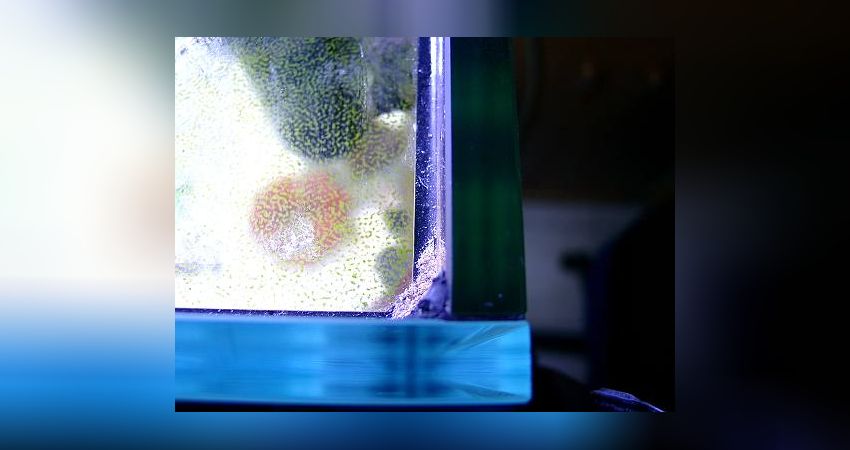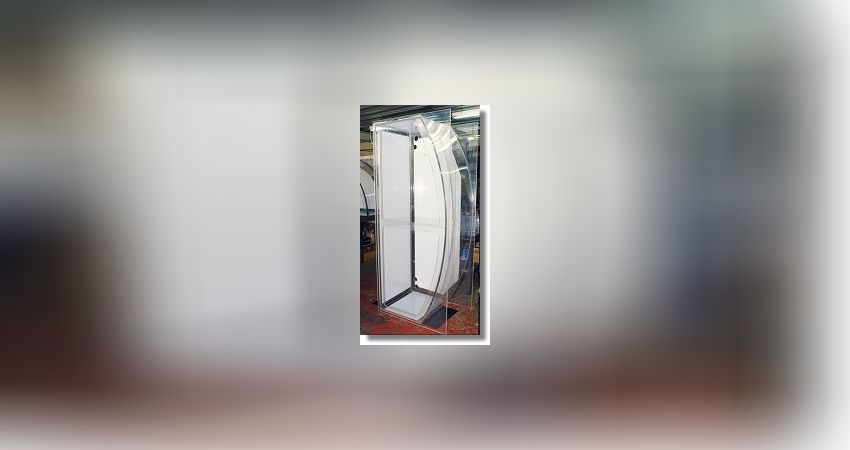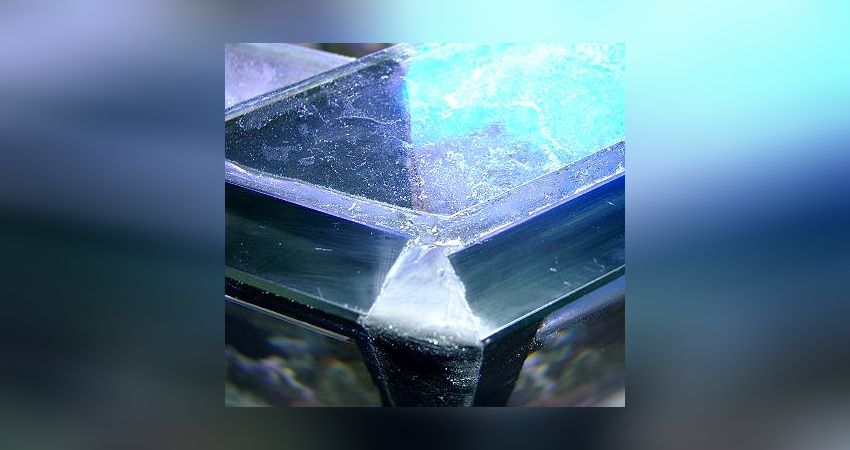02 - Choosing the right seawater aquarium

Optiwhite zu Grünglas
The choice of aquarium is one of the most important things to start with. There are glass, wood or plexiglass tanks, there is green or Optiwhite glass. We hope we have been able to give you a good overview?
The relationship (glass tank - acrylic glass - GRP aquarium)
1. Tank size:
When planning an aquarium, everyone will certainly realise beforehand how large their tank should be.
The authors advise for good reason: Plan your aquarium as large as possible.
We know from experience that almost every tank usually becomes too small too quickly, especially with regard to the stocking of animals. In addition, larger aquariums are usually a little more stable and more forgiving of mistakes than smaller tanks usually are. Exceptions prove the rule here too, and much depends on the aquarist and his prudence. Those who pay attention will see changes in their animals sooner than those who do not pay much attention.
It is difficult to give a general recommendation as to how many litres an aquarium should have. A good starting size is a volume of 300 litres upwards. It is certainly also possible to go below and above this, but this question often depends on the budget and sometimes also on the space available. In any case, we do not recommend starting with a nano reef system (small to very small aquarium), as these are not easy to master. There are exceptions here too, there are quite a few who only keep a nano reef tank without any fish stocking. There, crabs, shrimps and other small creatures cavort together with some disc anemones or crustaceans. This can also be fun and the learning factor is high.
Another important point about the larger tank volume is that you do not have to buy the equipment twice if you change the aquarium you have just bought to a larger one in a short time. Often the existing equipment becomes too small and you have to buy expensive equipment again. Go as big as you can, you will think of these lines sooner than you think.
2. the type of tank
As the opening name aptly suggests, this is about what type the new aquarium should be. In the past, the question was simple, as there were almost only glass aquariums. Today, however, the number of acrylic glass/Plexiglas tanks being sold continues to increase, so we would like to mention them as well.
Logically, both traditional glass and Plexiglas have their advantages and disadvantages, which we would like to point out here.
Let's start with the traditional glass tank. In years gone by, many aquariums were sold with a metal surround, but this is no longer the practice. Nevertheless, we should mention it: Metals have no place in connection with seawater, not even as a pure frame. Any metals are toxic for the water and can lead to massive problems and even death of the animals. We know that such aquariums are no longer sold today, but we also want to think about those who get such an aquarium from the basement. In addition, care should always be taken that the silicone used is not porous. Especially in aquariums that have been dry for a long time, the silicone is often broken.
But let's get back to the question of which material to choose. We can only give one direction in the following, much depends on what you are willing to spend.
a. Glass:
Glass actually has hardly any advantages over Plexiglas. The two main advantages are that the panes are not quite as sensitive, which goes hand in hand with easier cleaning of the glass panes, and the far lower price of a glass aquarium. You are also spoilt for choice when it comes to glass. There is the traditional float glass and the brighter and above all clearer Optiwhite glass. As you can guess, Opthiwhite is far more expensive than normal float glass, but it also offers a better visual image.
The visible difference between Optiwhite and float glass:
Optiwhite zu Grünglas
b. Plexiglas:
The advantages of Plexiglas are clearly the much lower weight of sometimes only 35% of a comparable glass aquarium, the much longer durability of the material, no silicone nets that can break or be destroyed, and clearly the shapes that can be made possible with Plexiglas. In addition, Plexi/Acrylic glass is much lighter than normal glass. However, the big disadvantage of Plexi tanks is usually, and many beginners will feel this way, the rather high price.
An example of a medium-sized Plexiglas aquarium, here a model by Schuran, Jülich
Schuran Becken
3. Butt or bead bonding?
For a long time bead bonding was considered the bonding method par excellence in marine aquaristics. For comparison, two photos of bead bonding and butt bonding for newcomers.
Verklebung wichtig!
For many years, we were also of the opinion that bead-glued pools are better, but it now turns out that this is a big mistake. The butt bonding of aquarium glass is more durable than the much more time-consuming bead bonding. In addition, there is a very important point: the butt bonding is certified with a DIN standard, which means that you will clearly be on the safe side in insurance matters.
4. GRP:
Whoever goes to the website www.holzaquarium.de will notice that there is also this possibility to realise an aquarium. Take a look, especially for large aquariums and for do-it-yourself construction, you can achieve a lot with glass fibre. Gerd Guddat, owner of the site, will be happy to answer any questions you may have.
Frank Diehl, Robert Baur-Kruppas
How do you like this article?
Info
Author

Bookmark
Comments
Topics
Similar articles
- 25 - Small polyp stony corals
- 01 - Sources of information
- Photographing under blue light - 4 clip filters in comparison
- How a saltwater aquarium is created-Part 4: The initial water
- 09 - The protein skimmer
- How a marine aquarium is created-Part 6: The recirculation pump
- How a marine aquarium is created Part 30: Fish, corals, night shots
- How a marine aquarium is created-Part 2: The stone structure
- How a marine aquarium is created Part 47: The Armatus 400 after 30 months
- 02 - Choosing the right seawater aquarium
Comments To the top
Please register
In order to be able to write something yourself, you must register in advance.






